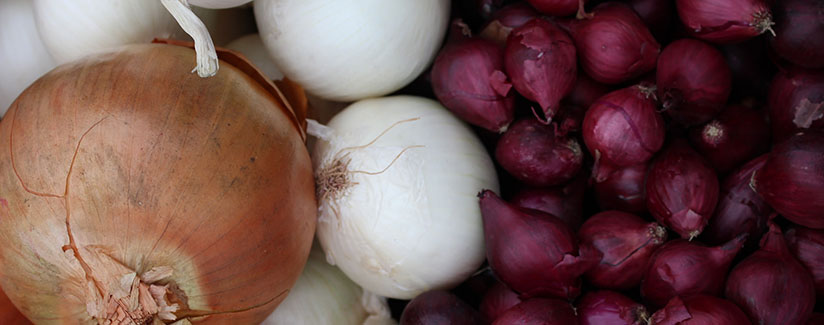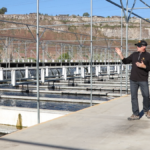
Is It OK to Use Leftover Onions?
We recently received a consumer question asking, “I read an article recently that said using leftover onion the next day was a very dangerous practice because it attracts germs, and my wife uses leftovers the next day frequently.” Is this true? What are the food safety rules concerning leftover onions?
We reached out to Dr. Ruth MacDonald, Chair and Professor of the Department of Food Science & Human Nutrition, Iowa State University, to get the facts!
Dr. Ruth MacDonald:
This story about onions has been propagated through the internet and it is not based on scientific fact. There are several issues at play here which can explain the observation.
First, any natural plant food will have bacteria on it, unless it has been processed by heat or irradiation. The bacteria will be derived from the field in which the vegetable was grown and may pick up bacteria during handling from your store or home. If you leave any vegetable at room temperature it will eventually decay due to the combined process of bacteria growth and breakdown of the cell walls. This may seem like the vegetable is ‘attracting’ bacteria but more likely the bacteria are just multiplying as the vegetable is breaking down. The rate of decay will depend on the level of bacteria present, the type of bacteria, temperature, oxygen and light, as well as the structure of the vegetable.
A second issue concerns the cut onion attracting bacteria. When you cut a vegetable the cell walls are disrupted, water and fluids are released and these may contain nutrients that enhance bacterial growth. So if there are bacteria present the cut surface will provide an enriched environment for more growth. Placing the onion or vegetable in the refrigerator will typically slow down the bacterial growth, but does not inhibit it completely (and some bacteria actually grow very well at refrigeration temperatures). So any vegetable, cut or not, is likely to have bacteria that will result in decay eventually, even if refrigerated.
Bacteria typically are not ‘mobile’ by themselves – they don’t fly or crawl from place to place. They are transported by contact – when you pick up the vegetable, bacteria from your hands will be transferred to the surface of the vegetable. Or when you place it on the counter or cut it with a knife, bacteria can be transferred from the counter or the knife onto the vegetable.
Some bacteria can be airborne but they cannot direct their flight in any way – they could only land on the vegetable if the air current carries them to the vegetable. So the idea that the onion ‘attracts’ bacteria is not at all scientifically plausible.
A third issue is whether a cut onion will attract a certain type of pathogenic bacteria. Again, bacteria do not select where they will land – however the environment they land on will determine whether they survive or not. So if a bacteria lands on a surface that contains the right nutrients, temperature and oxygen level required for it to grow, then it will grow. If any of those requirements are not met, then it will not grow. Hence, if a pathogenic bacteria is present on a vegetable, and the conditions for growth are right then the bacteria will multiply.
So what should one do to prevent illness from vegetables?
- At the store: Select intact vegetables that do not have soft spots or bruises and handle them gently.
- At home: Wash the vegetables with cool water, use a gentle brush if you want – and dry.
- Store them in a cool and dry location, or in the refrigerator.
- When you handle vegetables, wash your hands first, use clean utensils and cutting boards, and avoid cross contamination especially with raw meats or eggs
- Immediately wrap leftovers in plastic or place in sealed containers to prevent moisture loss and store in the refrigerator – use within 2-3 days
- If the leftovers look mushy, have a cloudy fluid around them, feel slimy or have an odor – throw them out!
“Onions in Three Colors” by Mats Hagwallmizo is licensed under CC BY.


























